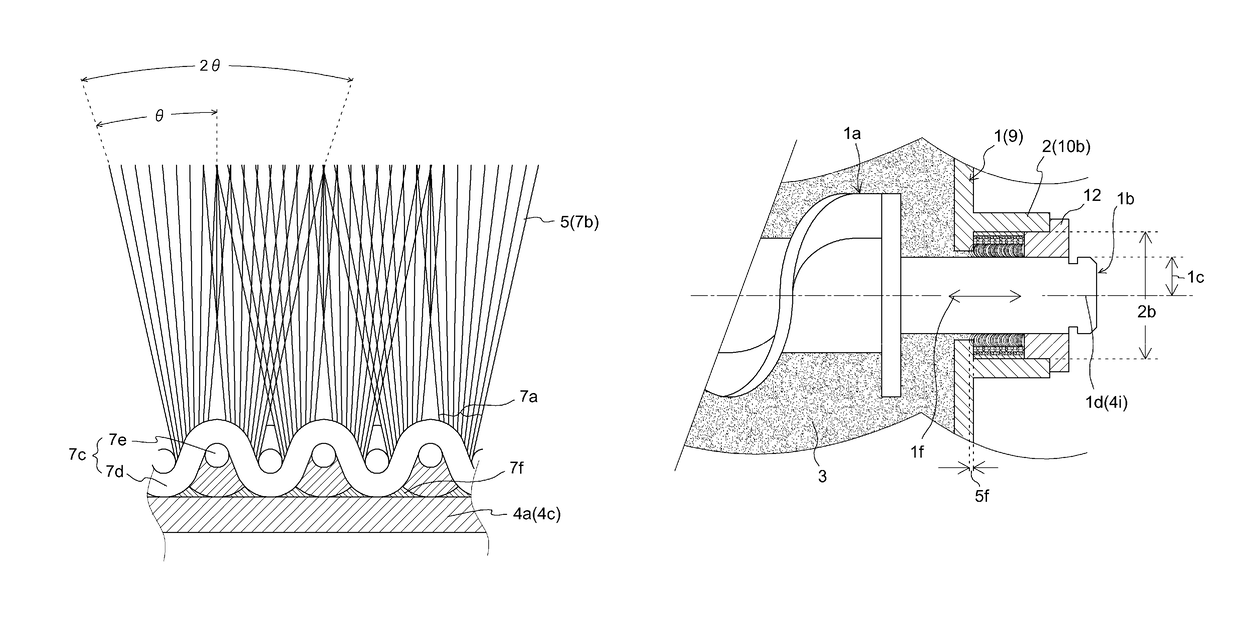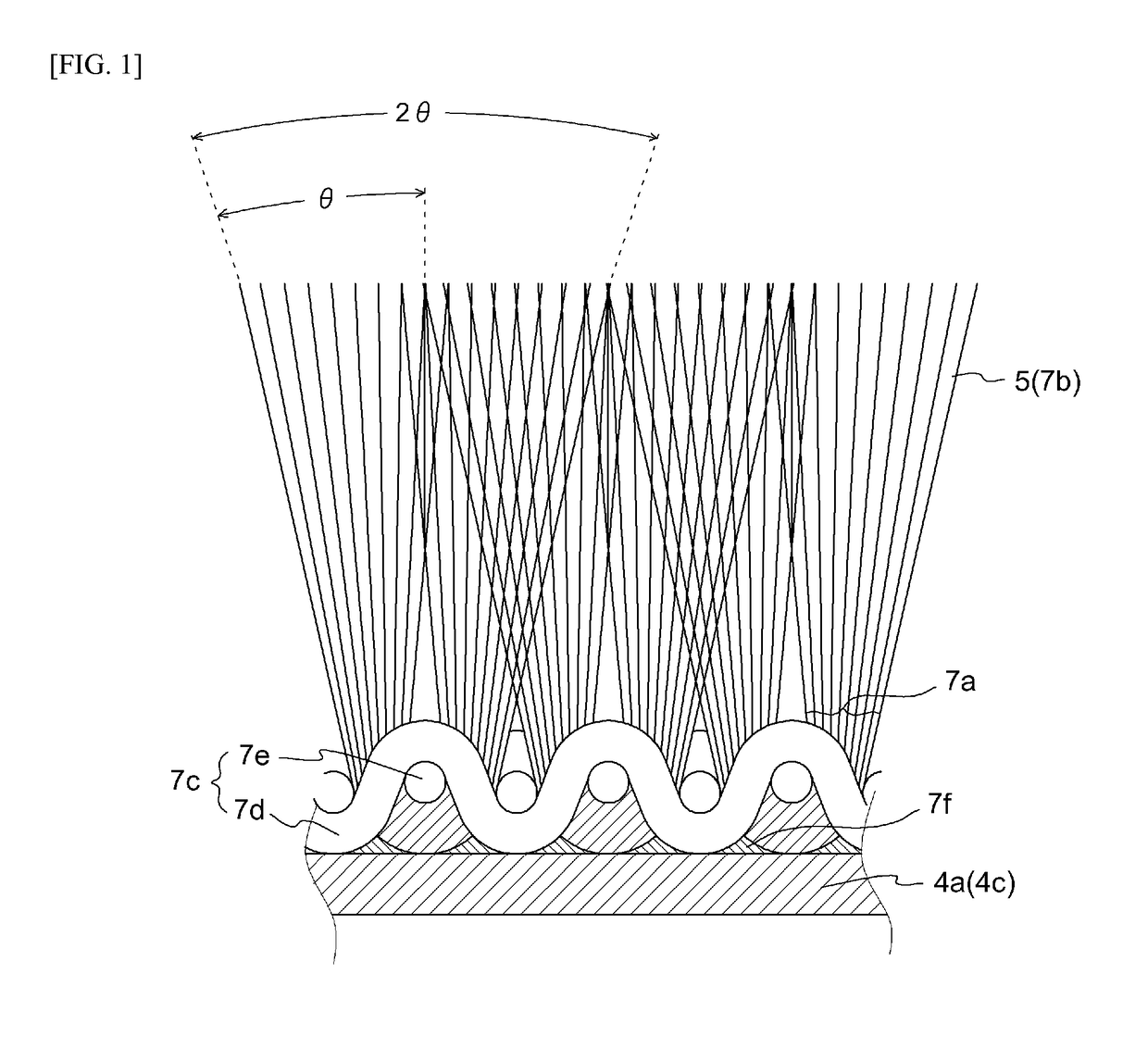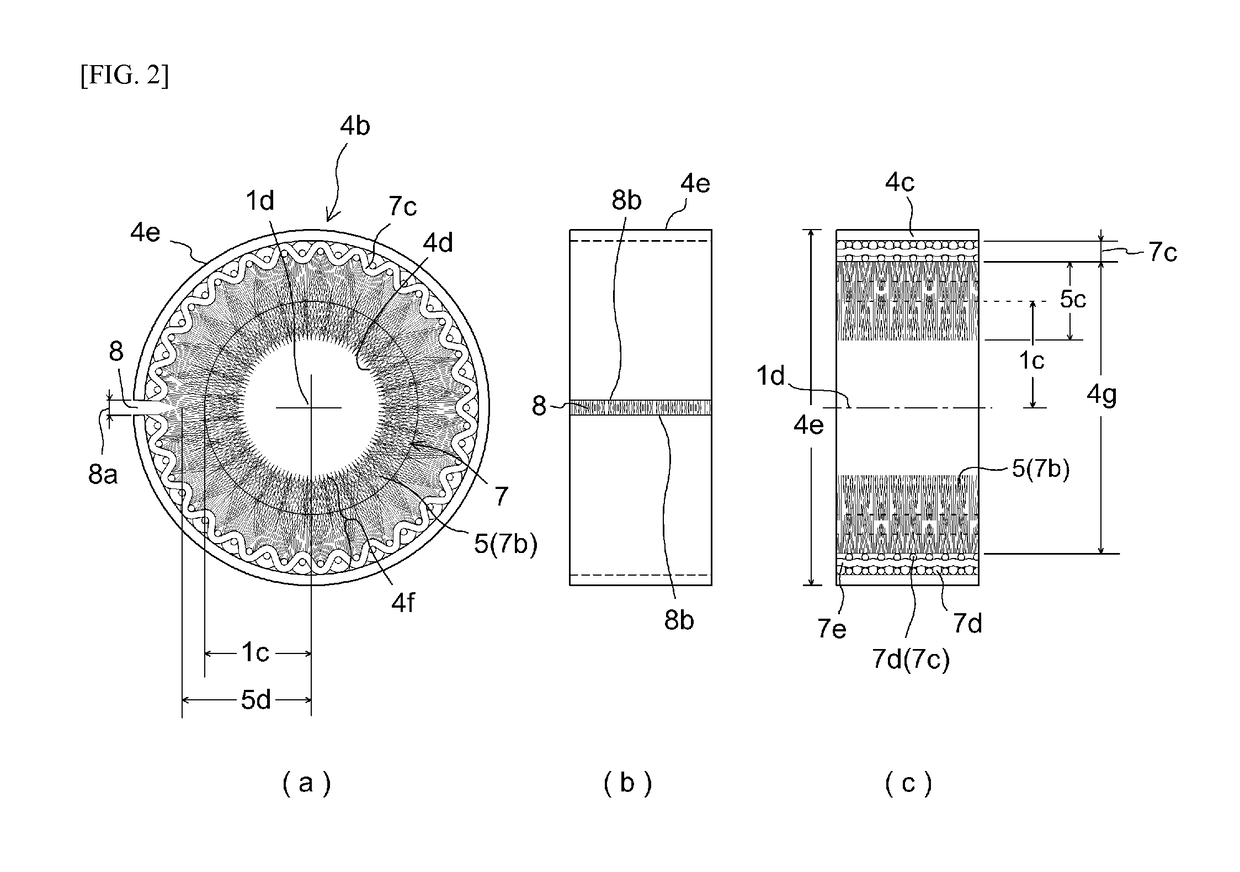Cylindrical shaft-sealing material obtained from pile weave or knit
a technology of weave or knitted yarn and cylindrical shaft, which is applied in the direction of engine seals, leakage prevention, machines/engines, etc., can solve the problems of reducing seal performance, affecting the longevity of the seal, and viscoelasticity of the sealing member, so as to prevent powder leakage, facilitate the attachment, and eliminate the effect of pile entrainmen
- Summary
- Abstract
- Description
- Claims
- Application Information
AI Technical Summary
Benefits of technology
Problems solved by technology
Method used
Image
Examples
working examples
[0089]When hole diameter 10a for attachment of cylindrical shaft seal member 4b to hole 10 through which the rotating shaft passes is made to be 10 mm, it is caused to be attached to this hole diameter 10a. To this end, when length of pile 5 was 2 mm, thickness of ground yarn 7c at woven / knit pile fabric 7 was 0.9 mm, fiber density at pile 5 was 467500 threads per in2, and average pile diameter ΦF was 13 μm, planar seal member 4f comprising this woven / knit pile fabric 7 was laminated by means of adhesive to an aluminum sheet of thickness 0.3 mm constituting cylindrical support member 4c of outside diameter 4b, this was cut to a width of 3 mm and a length of 29.8 mm to accommodate hole 10 through which the rotating shaft passes, and this was then formed by means of a forming machine to fabricate cylindrical shaft seal member 4b. Note that when this was attached to attachment hole 2a for which diameter 10a of the hole through the rotating shaft passes was 10 mm, gap 8c at linear slit ...
PUM
 Login to View More
Login to View More Abstract
Description
Claims
Application Information
 Login to View More
Login to View More - R&D
- Intellectual Property
- Life Sciences
- Materials
- Tech Scout
- Unparalleled Data Quality
- Higher Quality Content
- 60% Fewer Hallucinations
Browse by: Latest US Patents, China's latest patents, Technical Efficacy Thesaurus, Application Domain, Technology Topic, Popular Technical Reports.
© 2025 PatSnap. All rights reserved.Legal|Privacy policy|Modern Slavery Act Transparency Statement|Sitemap|About US| Contact US: help@patsnap.com



